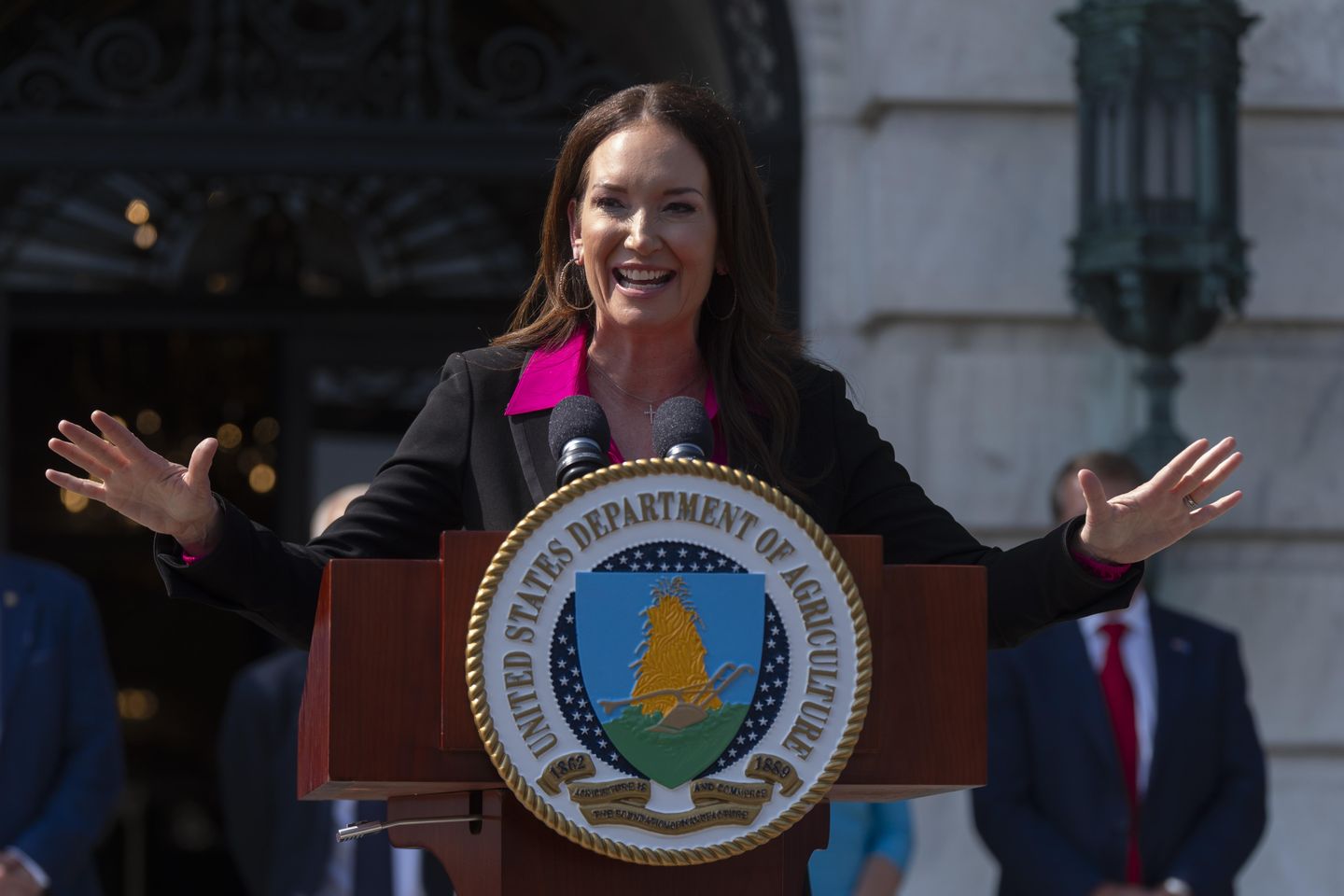
The Agriculture Department announced Thursday that it will shift thousands of workers in the Washington area to five areas across the country in the latest salvo by the Trump administration to reduce the scope of the federal government.
Roughly 2,600 workers, who account for nearly half of the agency’s D.C. workforce, will be moved to hubs in Raleigh, North Carolina; Kansas City, Missouri; Indianapolis; Fort Collins, Colorado; and Salt Lake City.
That will leave the Agriculture Department with fewer than 2,000 workers in the Washington metropolitan region. As part of the relocation plan, it will vacate several buildings, including its flagship research site, the Beltsville Agriculture Research Center in Maryland, and a headquarters on the National Mall.
The USDA said it will also close the George Washington Carver Center in Maryland and a Food and Nutrition Services facility in Alexandria, Virginia.
Staffers will receive notices about their new assignments in the coming months, the agency said.
The closures will leave the USDA with only two buildings remaining, both along the National Mall.
In a video to staff employees, Agriculture Secretary Brooke Rollins said the move, which will be carried out in phases, will bring the USDA staff closer to its “core constituents.”
“This reorganization already recognizes that many USDA employees provide critical frontline services in locations all across our great country that cannot be disrupted,” she said, underscoring that there would be no staff reductions.
The agency is already reeling from staff attrition. More than 15,000 USDA employees, about 15% of its total workforce, have taken buyouts to leave. In addition, a significant number of workers left in 2019 when the first Trump administration relocated two of its affiliates — the Economic Research Service and the National Institute of Food and Agriculture.
More than 90% of the agency’s 100,000 employees are already based outside the nation’s capital in regional offices, including regional research facilities, farm loan offices and conservation offices.
Meanwhile, the move will let the Trump administration cut workers’ pay because Washington has a 34% federal salary locality rate, which boosts salaries based on the cost of living, compared with 17% for Salt Lake City, for example.
“While this decision is a strategic and long-term decision for USDA, I know that for you, this is an immediate and potentially major change,” Ms. Rollins said in the video message. “I know that your primary concern at this moment is for you, your families and your colleagues, I want you all to know that this decision was not entered into lightly.”
Congressional Republicans pushed for some time to relocate USDA employees, hoping to bring them into their districts.
Although it’s important to be closer to farmers and ranchers, Chad Hart, a professor of agricultural economics at Iowa State University, said taking those employees out of Washington risks losing an important connection to Congress.
“You want that balance” to ensure effective farm policy, Mr. Hart said.
Everett Kelley, national president of the American Federation of Government Employees, the labor union representing federal workers, had a sharper critique. He said about 85% of all federal employees already work outside the capital, but insisted Washington “is the center of our nation’s government for a reason.”
Workers at headquarters help coordinate between senior leaders and field offices, Mr. Kelley said, and they ensure the agency has a “seat at the table” when lawmakers and the White House make decisions that affect farmers nationwide.
“I’m concerned this reorganization is just the latest attempt to eliminate USDA workers and minimize their critical work,” the union leader said.
The moves at USDA follow a Supreme Court ruling earlier this month that allowed agencies to reorganize and reduce staff.
• This article includes wire service reports.













